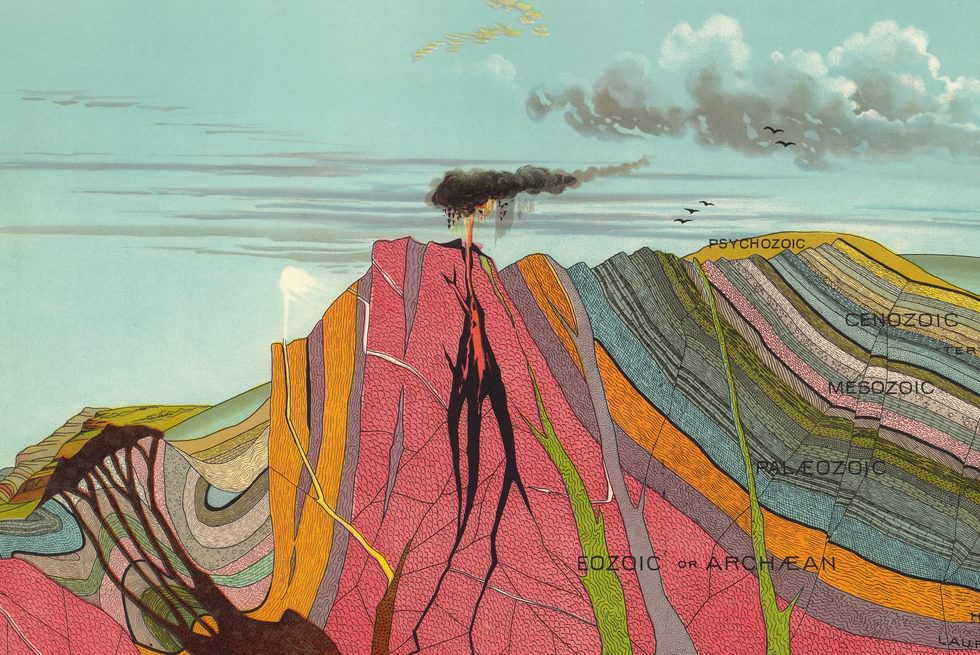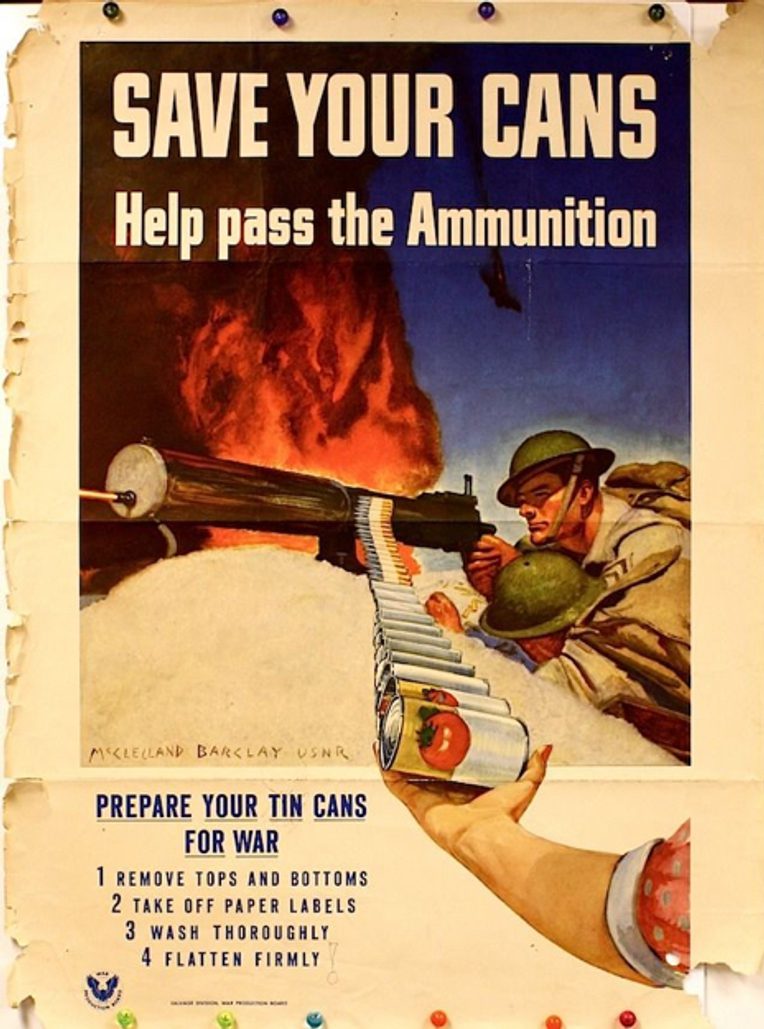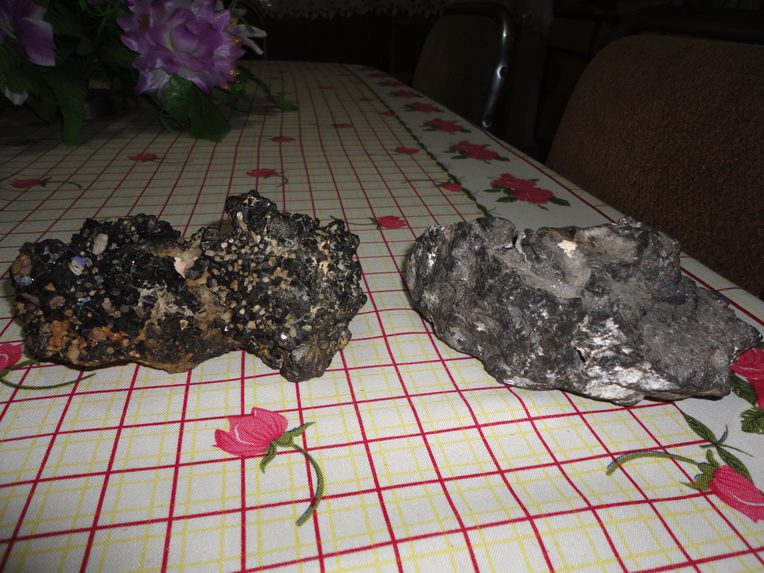Domesticating Metal
From the Series: Geological Anthropology
From the Series: Geological Anthropology

Tin is far from a sexy resource. It is neither slick like oil nor dubiously “green” like lithium, and it does not conjure images of either blood-soaked resource wars or a sparkly new modernity. It is a pedestrian metal, melted as tiny ribbons of solder into nearly every device we own. What’s the point of writing about tin?
In this brief piece, I use tin as a vehicle for making an argument about the need to domesticate our thoughts about metals, ores, and the geos more generally. By domesticate, I mean to bring our thoughts about rocks and ores into the home, with all of its gendered implications. But I also mean thinking about the geological as part of the domestic sphere, even at the site of extraction. This shift in emphasis might seem subtle, but its conceptual implications are significant. By and large, metals have been thematically connected to mines, machinery, and armaments, which are in turn apprehended through the lenses of economic production and military-industrial complexes. Yet metals populate our everyday lives. Thinking domestically about these elements will allow us to draw new connections across spaces that are typically separated: rural and urban, global South and global North, production and consumption.
Tin might not seem exciting these days, but in the nineteenth and early twentieth centuries this unassuming metal enabled new spatial arrangements of land, labor, and housing that, in turn, permitted the growth of industrial capitalism. Unlike most metals, tin does not oxidize when exposed to oxygen or water, and by the turn of the twentieth century tin cans were the favored method of food transportation. Tin carried essential nutrients from farm to field, allowing factory workers to live far from sites of food production. Indeed, tin was so successfully put to work in food preservation that traces of the metal, which is relatively rare in the earth’s crust, can now be found in nearly every living creature on earth (Duffield et al. 1989).
As the rows of Campbell’s soup cans in Andy Warhol’s 1962 painting suggest, tin cans became ubiquitous household objects in the global North, symbolic of a new era of mass production and uniform supply. They also permitted the flourishing of a new kind of domestic imaginary. In this imaginary, food was always ready-to-eat and aprons were rarely dirtied. White women in flowered frocks no longer had to shell peas or shuck corn and could maintain a tidy distance from the dirt of rural work. During World War II, when the supply of tin in the United States was jeopardized by Japan’s seizure of Indonesia and Malaysia—two of the richest sources of tin today—the same frocked women participated in the war effort by learning to recycle their tin cans (Figures 1 and 2). Both a nationally strategic resource and a responsibly recycled soup can, tin crossed various lines of domesticity.


As might be inferred by these advertisements, the U.S. subterranean is virtually tin-free. Ensuring the safe passage of food, and by extension the structural integrity of modern urban spaces, meant ensuring a continuous supply of tin from the exterior. Especially during the war years, much of this tin came from Bolivia. One of the planet’s largest tin belts is woven through the Bolivian Orocline, the place on the west coast of South America where the continent appears to bend like a runner’s knee. In the twentieth century, Bolivian tin mines produced not only massive amounts of metal but also some of the world’s most militant labor unions—a fact that remains memorialized in the late June Nash’s (1979) classic ethnography, We Eat the Mines and the Mines Eat Us. Neoliberal restructuring was the death knoll for most of these unions, as the state-owned tin mines were closed in the late 1980s. But that doesn’t mean that people stopped mining. Thousands of miners continue to eke out livings by tracing threads of tin that can still be found, like crystallized gossamer, throughout mines that have been officially labeled “exhausted.”
For most of these “small-scale” tin miners, as they are typically understood, the mine is an extension of the domestic space, where people eat and drink and occasionally sleep. Important festivals, such as Carnival, include underground décor and ceremonial festivities (Figure 3). Family members who might not actually labor in the mine accompany miners for these events, from the family kitchen to the subterranean family plot. The mine comes back into their aboveground lives, too, in the form of decorative minerals, hunks of ore that commemorate particularly rich strikes or appear particularly attractive (Figure 4). Sprinkled with colorful confetti and splashed with a few drops of beer—the universal benediction of the Bolivian highlands—these rocks are blessed during family ceremonies alongside Christian iconography, household appliances, and unreliable satellite hookups.


Most—but not all—of these small-scale miners are men. An exception to that rule is Demetria,1 who began laboring secretly, at night, when her husband fell into a coma. Medical bills were piling up and Demetria had six children to feed. After more than a decade spent working underground, she describes her pauwiche, the subterranean room where she and her husband store their supplies and chew coca in the morning, as her “second home.” Her aboveground home is bright and sunny, and every surface is decorated with a crocheted yellow doily. Her belowground home is neat and tidy too, though it is harder to clean where walls sweat rusty water and the ground is a patchwork of coca-leaf skeletons. In both places, Demetria is confident and commanding, the queen of her humble castles. Tin is as much a domestic metal at the site of extraction, where it is hauled out of the earth, as it is at the site of consumption, where it contains the evening meal.
Of course, tin mining is no longer as essential to food preservation, having been largely replaced by aluminum, widespread recycling programs, and ever-thinner tin sheet metal. Yet it is still ubiquitous, as Demetria reminds anyone who will listen. She taps her cell phone, her TV, and her radio to show me where tin is being used today. She’s right: Since the passage of laws that limit the use of lead in solder used in electronics sold in North America or Europe, most devices have even more tin than they used to have. As tin-filled devices come to define contemporary techno-modernity—and with the possibility that demand for tin will increase with a transition to “green energy” (i.e., mineral-based rather than hydrocarbon-based)—tin is once again the quotidian metal of domestic modernity.
Perhaps Demetria’s blessings have been working.
1. Demetria is a pseudonym.
Duffield, J. R., C. R. Morris, D. M. Morriah, J. A. Vesey, and D. R. Williams. 1989. “The Speciation and Bioavailability of Tin in Biofuels.” In Tin-Based Antitumour Drugs, edited by Marcel Gielen, 147–69. New York: Springer-Verlag.
Nash, June. 1979. We Eat the Mines and the Mines Eat Us. New York: Columbia University Press.